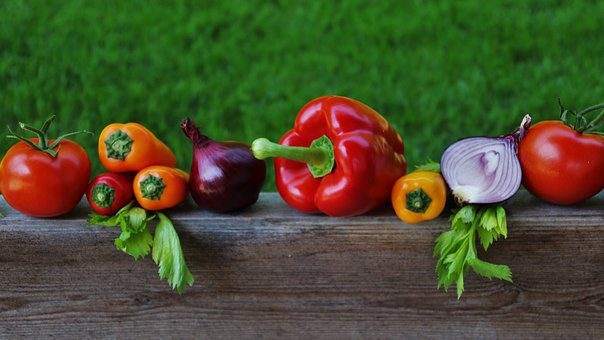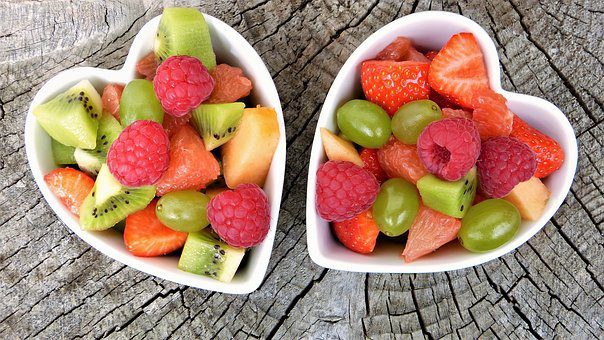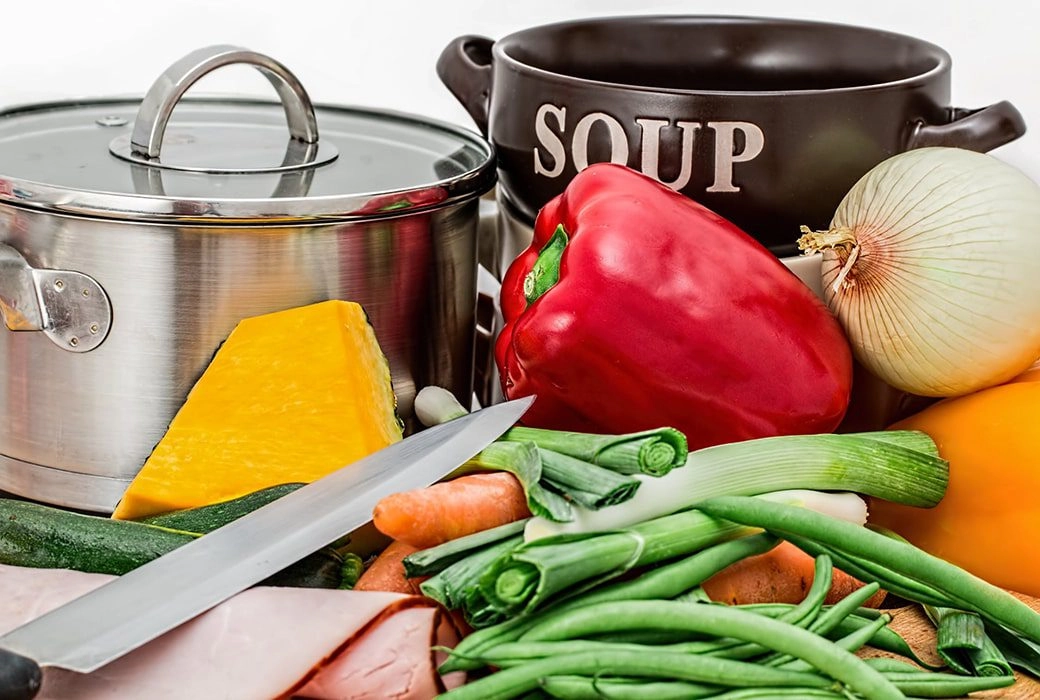Can foods actually reduce pain levels? Yes, it can! An anti-inflammatory diet for chronic pain is often recommended by chiropractors and holistic doctors. Healing foods for back pain come to us directly from Mother Nature, but they aren’t all the same. When it comes to nutrition, the foods you are eating can actually make your chronic pain worse.

Studies show that at least 50 percent of the calories consumed each day by American’s come from sugar, white flours, vegetable oil and industrial seed oils. These foods are known to increase inflammation in the body.
Many types of pain are due to inflammation. While inflammation is a natural and healthy response to injury, chronic inflammation is not. If not treated, chronic inflammation will move throughout the body, causing pain and aggravation.
Low grade, chronic inflammation leads to numerous health problems, including arthritis, obesity, dementia, cancer, heart disease, stroke, cancer, and diabetes to name a few.
Back and neck pain are subject to inflammation. Since we use our spines and necks daily, it is almost impossible to allow them the proper time and rest they need to heal.
When you injure your neck or back, the nervous system of the body sends signals to the immune system to send certain chemicals, new red blood cells, and other things needed for healing. This is known as inflammation. Under normal circumstances, the body heals itself and the inflammation subsides or gets “turned off’.
Eating foods that trigger the immune system, such as refined white flours or sugar, creates inflammation that cannot be “turned off” because signals (inflammatory foods) are constantly being received that there is an injury.
The Anti-Inflammation Diet for Chronic Pain
Look to the earth’s natural goodness for foods that reduce pain. A mainly plant-based diet can go a long way towards reducing inflammation. Some of the best anti-inflammatory fruits and vegetables are:
✓Cherries
✓Red grapes
✓Carrots
✓Watermelon
✓Leafy green vegetables
✓Sweet potatoes
✓Bell peppers (all 3 colors)
✓Spinach
✓Broccoli
✓Cabbage (all colors)
✓Kale
✓Beets
✓Berries
✓Tomatoes

Anti-inflammatory Herbs and Spices
In addition to fruits and vegetables, there are also plenty of herbs and spices that fight inflammation in the body, including:
✓Cinnamon
✓Ginger
✓Curcumin (turmeric)
✓Garlic
✓Basil
✓Rosemary
✓Oregano
✓Onions (all colors)
✓Cloves
✓Sage
✓Cayenne
✓Black Pepper
✓Cardamom Seeds
✓Celery Seed
✓Chamomile
✓Nutmeg
✓Fennel
It should be mentioned that curcumin and garlic top this list of herbs. Curcumin has long been known to have very powerful anti-inflammatory compounds. The compounds in garlic stop the body from producing the chemicals which cause inflammation.
Meat and Chronic Inflammation
You don’t have to go all out vegetarian to find foods that reduce pain and inflammation. While it’s a good idea to cut back on red meat, there are plenty of meats and seafood that help the body heal especially:
✓Organic, free-range chicken
✓Organic, free-range turkey
✓Fish, especially oily fish like salmon, tuna, sardines, and Atlantic herring
✓Seafood, such as shrimp and oysters
✓Organic, grass-fed, lean cuts of beef (no more than 2X per week)
✓Organic, corn-fed, lean cuts of pork (no more than 2X per week)
Make your focus more on plants and less on meat. Feel free to eat all the fish you want but limit your consumption of pork and beef to no more than 2 servings (4 ounces) each week.
Anti-inflammatory Fats and Oils

This is where the real work comes in for most people as we have become accustomed to an inflammatory diet. Exchanging some of these foods for less healthy choices might be difficult at first but it will pay off with less pain in the future.
Anti-inflammatory oils include:
✓Olive oil
✓Flaxseed oil
✓Walnut oil
✓Coconut oil
✓Palm oil
✓Macadamia oil
✓Avocado oil
✓Sweet almond oil
If the oil you use now is not on this list, throw it out.
Healthy fats include the following items:
✓Butter
✓Ghee
✓Avocados
✓Nuts
✓Chia seeds
✓Flaxseeds
✓Pumpkin seeds
✓Cheese
✓Dark chocolate
✓Whole Eggs
✓Yogurt (no added sugar)
✓Kefir
Anti-inflammatory Beverages
You don’t have to live by water alone! Although you already know you need your 8 glasses each day, but most people enjoy spicing up their day with other liquids. Which are the best anti-inflammatory beverages?
✓Lemon juice (add a slice or two to your water)
✓Tart cherry juice
✓Pineapple juice
✓Turmeric tea
✓Green tea
✓Herbal teas (without sugar)
Other Anti-inflammatory Foods for Chronic Pain
Let’s not forget other sources of protein that fight inflammation besides meat. These include foods such as:
✓Chickpeas (AKA Garbanzo beans)
✓Green peas
✓Lentils
✓Black beans
✓Kidney beans
✓Pinto beans
✓Navy beans
✓Peanuts
✓Tamarind
Super Anti-inflammatory Supplements
Although some people believe supplements simply give you more expensive pee, there are studies which have found that some supplements can reduce inflammation and pain. Some of the best supplements you should consider are:
✓Alpha-Lipoic Acid-This has been linked in several studies to lower inflammatory markers.
✓Curcumin-Part of the spice turmeric, curcumin has vast amounts of impressive research showing it lowers inflammation, including this study and this one.
✓Fish Oil-The omega-3 fatty acids in fish oil lower inflammation in studies done with diabetes, heart disease, and more.
✓Ginger-Commonly used to treat indigestion and nausea, this spice can reduce inflammation for those with diabetes, colitis, and even breast cancer.
Always consult your doctor before taking any supplements, especially if you are taking prescription medications.
The Whole Grain and Dairy Question
These two foods groups cause a great deal of discussion and dissent. Studies have found that these two food groups reduce inflammation in some people yet cause inflammation in others.
If you are lactose intolerant, it’s safe to say that you should remove dairy products from your diet entirely. Likewise, if you have celiac disease, all gluten should be removed from your diet.
For everyone else, the safest option would be to remove both food groups. Add whole grains back into your diet after 30 days. If you notice pain or other unwelcome symptoms returning, you should remove gluten from your diet.
Repeat this process with dairy. If you begin to have pain or unpleasant symptoms, dairy is not going to work for you.
If neither food group causes you pain or physical discomfort, you are in luck! Add at least one serving of whole grain and two servings of dairy each day to your meal plan.
Foods to Avoid
While some of the following foods on this list might seem like no-brainers, it doesn’t seem to stop people from eating them. Many people are also confused by the #1 offender on this list: sugar.Let’s look at the worst foods that are well known to cause inflammation.
1) Sugar
When we say sugar, we mean sugar in all its forms. This includes honey, agave nectar, cane sugar, beet sugar, high fructose corn syrup, corn syrup, maple syrup, and molasses. Too many people make the mistake of believing sugar that comes from other sources, such as agave nectar or honey, means it’s not the same (or not as “bad”) as table sugar. This is not true. Sugar, no matter where it comes from, is still sugar and it causes inflammation in the body.
2) Vegetable Oils
This includes corn oil, safflower oil, cottonseed oil, red palm oil, canola oil, sunflower seed oil, margarine, “butter” spreads, and soybean oil.All these oils have a high ratio of omega-6 to omega-3 fatty acids.
3) Refined White Flour
This includes foods made from these flours, including pizza, bagels, bread, cake, cookies, donuts, pancakes, and waffles.
4) Processed Meats
An occasional hot-dog will not hurt you, but a steady diet of bacon, lunch meat, smoked meats, and sausage is doing you far more harm than good.
5) Trans-Fat
You can find these in any food containing partially hydrogenated oils, including ice cream, shortening, pizza, non-dairy creamers, frosting, and muffins.
6) Fried Foods & Fast Food
We know that fried food and some fast foods taste good, but they are certainly not doing your pain and inflammation any favors. A study done in 2009 at the Mount Sinai School of Medicine found that when subjects greatly reduced the amount of fast food and fried foods in their diet, they reduced inflammation and improved their immune system.
Hippocrates, considered to be the father of modern medicine, once said: “Let food be thy medicine and medicine be thy food.” Perhaps we should take this advice to heart and let food, once again, become our medicine for relief of pain and the reduction of inflammation.
Schedule an Appointment and Receive
FREE One-Hour Massage Certificate
That’s right! Receive a certificate for a free one-hour massage with our highly-trained and licensed massage therapists for use after your first appointment. Use it yourself, or give it to a friend.
[gravityform id=”8″ title=”false”]









